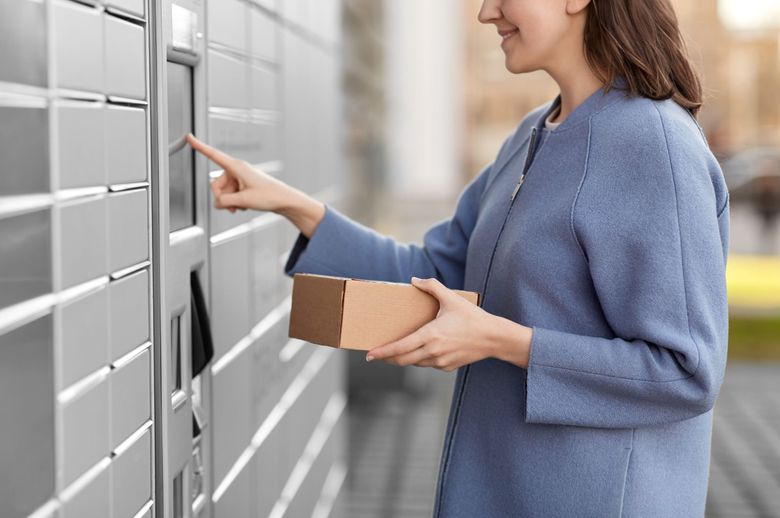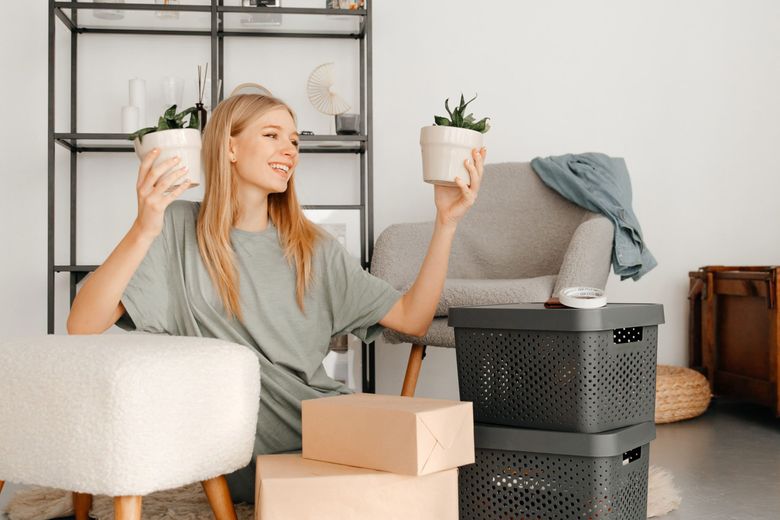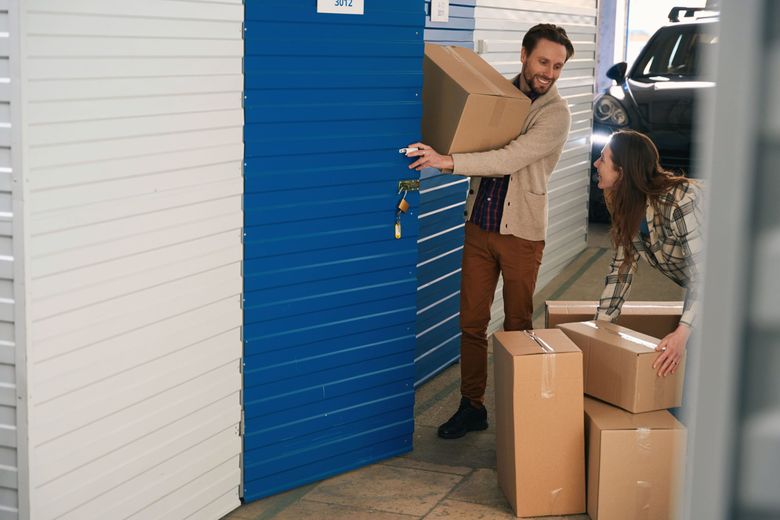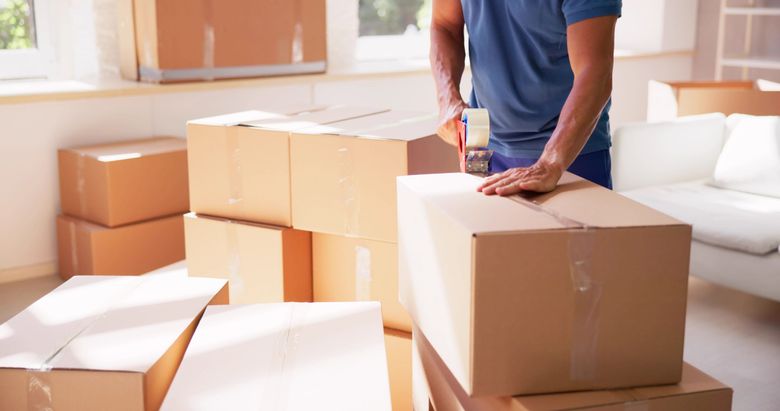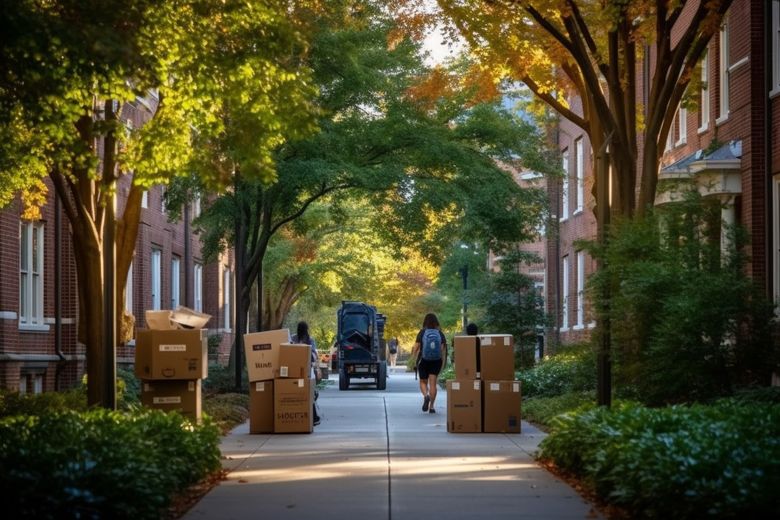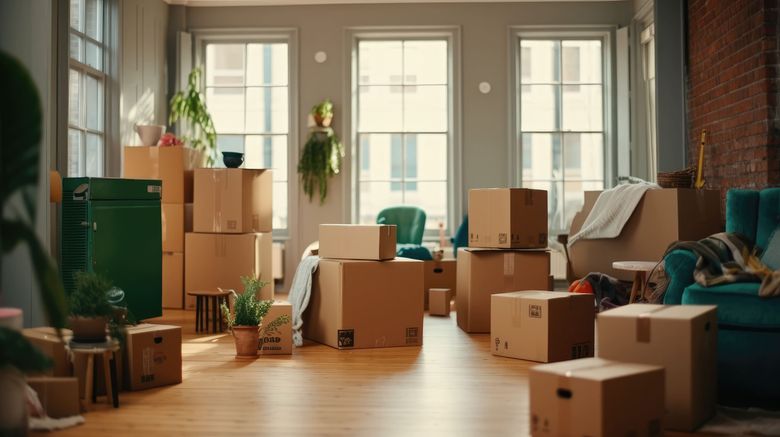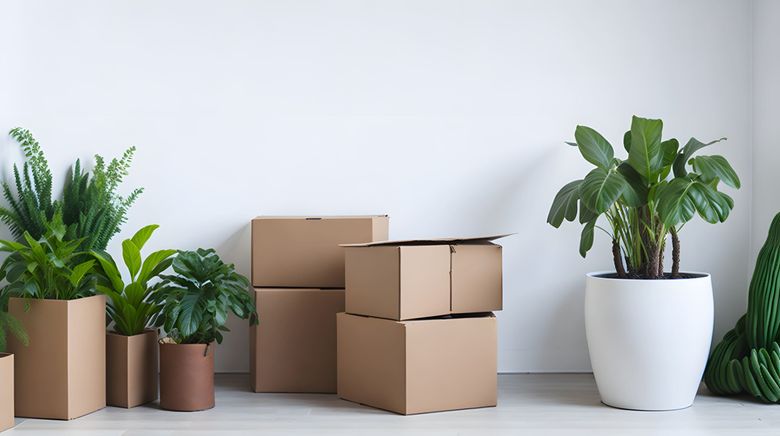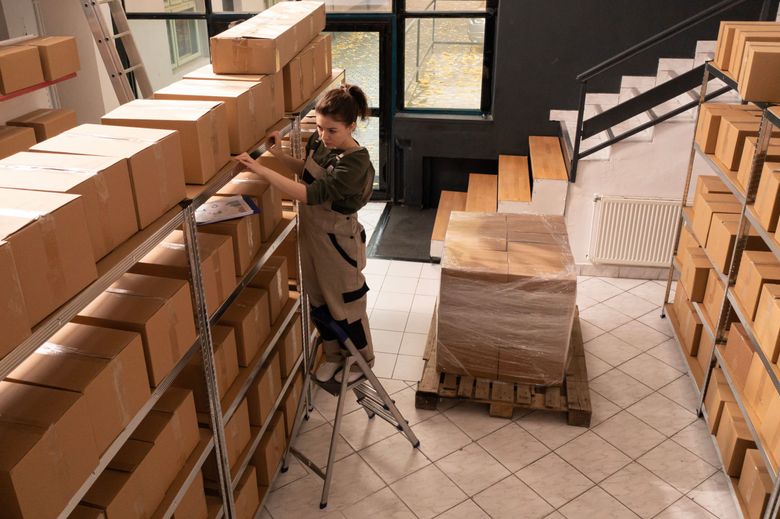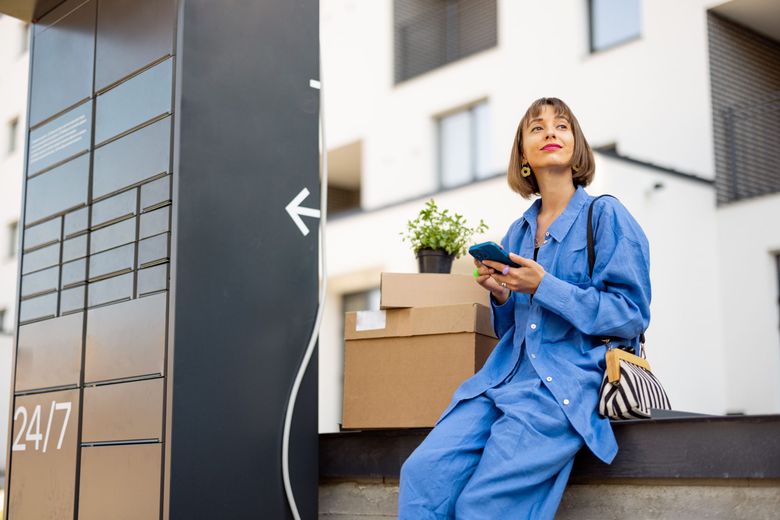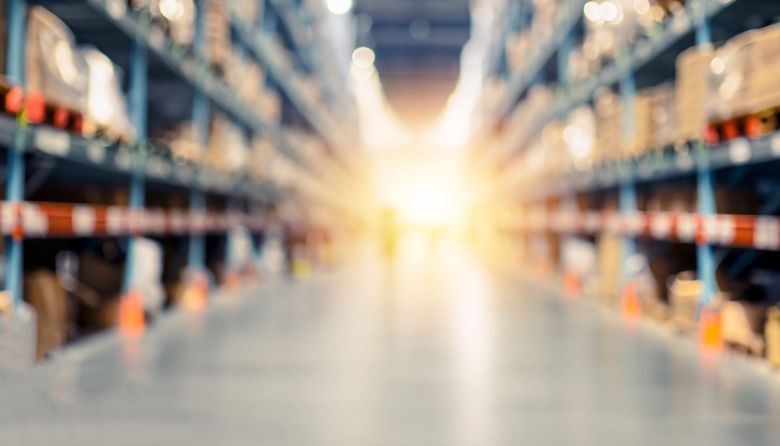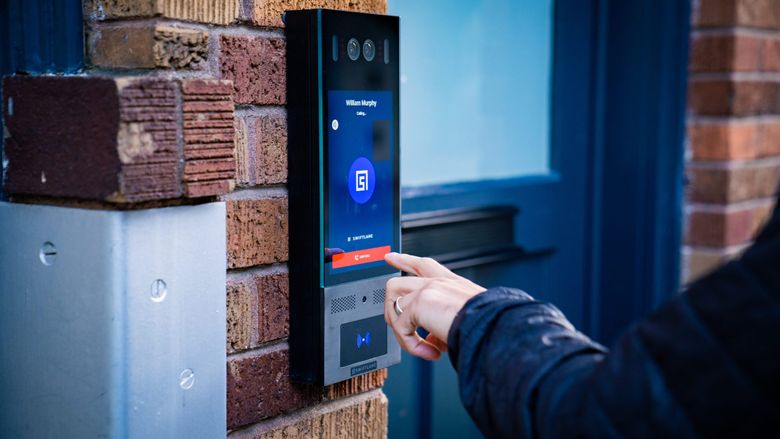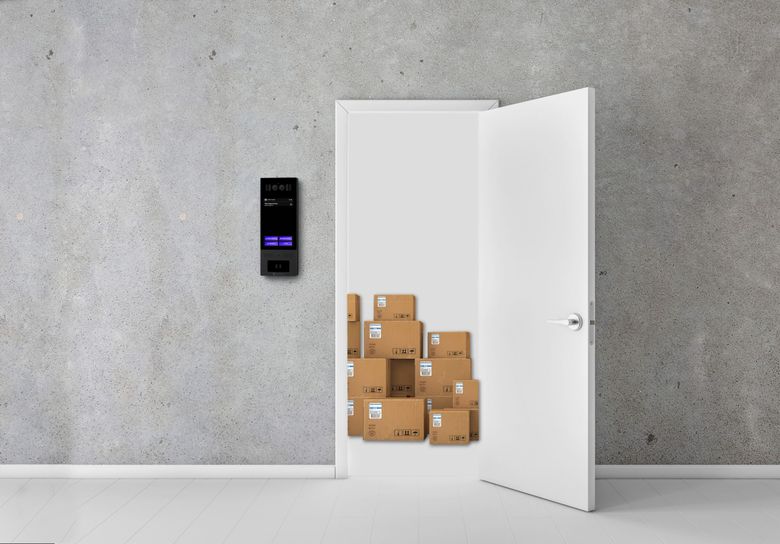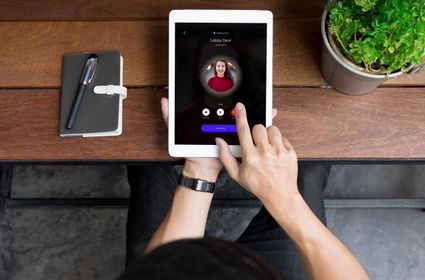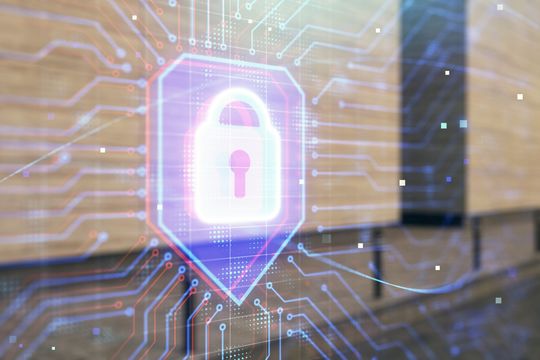Due to the surge in online shopping, especially during and after the COVID-19 pandemic, package deliveries have significantly increased. NMHC (National Multifamily Housing Council) predicts that over 60% of people receive more than eight packages a month.
In the age of Amazon deliveries, UberEats, DoorDash, and endless online shopping options, the number of packages delivered daily to apartment buildings is staggering. And let’s not forget about those monthly subscription boxes, from meal kits to beauty products, that many of us can’t live without.
$6 billion worth of packages were estimated to be stolen in 2020. As a result, the humble mailroom of yesteryears is no longer sufficient to handle the influx of parcels. This is where the package room steps in, providing a dedicated, secure space for all those packages waiting to be picked up by their eager recipients.
But why should you care about package rooms, you ask? Well, for starters, they can drastically improve the efficiency of package management in residential buildings. No more overflowing mailrooms, lost packages, or disgruntled residents who missed their delivery. Plus, package rooms can be a major selling point for potential tenants who value convenience and security when it comes to their deliveries.
So, are you ready to dive deeper into the world of package rooms? Let’s get started!
Key Takeaways
- Secure your building’s package management system with a package room – it’ll be worth the investment!
- Get tailored customer satisfaction and top-notch security from Swiftlane, Luxer One or Hello Package.
- Avoid mistakes like inadequate security & poor organization to ensure a successful transition.
What Is A Package Room?
A package room, also known as a package locker room or parcel locker room, is a secure area typically found in apartment buildings, condominiums, office complexes, or other multi-unit dwellings. Its primary purpose is to provide a secure and convenient location for the delivery and retrieval of packages and mail.
Package rooms are becoming increasingly popular due to the growth of online shopping and the need for a secure place to store packages until residents or tenants can pick them up. These rooms typically include a combination of lockers, shelves, or storage compartments where packages can be placed by delivery personnel. Each locker or compartment can be assigned to a specific resident or tenant, and they are often accessible through a unique code or key, which ensures the security of the contents.
How Do Package Rooms Work?
Imagine a courier reaching your building with a delivery. They enter the secure package room, using an access control system, and deposit the package in a designated spot. Meanwhile, a camera and 24/7 cloud-based video surveillance record the delivery, ensuring that your package remains safe. With a package room, you no longer have to worry about the safety of your deliveries, and your building staff can focus on more pressing matters. Let’s go through a detailed view of how package rooms work.
Access the Room
Delivery: When a package is delivered to a residential building or complex, the delivery person first goes to the package room, which is typically a secure area designated for package storage. They usually need access through a secure entry point, like a key card, code, or electronic lock, which can vary depending on the building’s security measures.
Verification: The delivery person may need to verify their identity or the delivery details to ensure they have the right to access the package room.
Leave the Package
Storage: Once inside the package room, the delivery person places the package in a designated area or on shelves specifically for package storage. Some package rooms have lockers where packages are placed for added security.
Recording: In some cases, the delivery person may need to record the package’s details, such as recipient’s name, delivery date, and tracking number, for tracking and security purposes.
Alert the Residents
Notification: After successfully depositing the package, the package room system or building management often sends automated notifications to the intended recipient(s). This notification may be in the form of an email, text message, or app notification, informing them that a package has been delivered and is ready for pickup.
Access Code: The notification may also include an access code or instructions on how to retrieve the package, especially if the package is stored in a locker. This access code ensures that only the intended recipient can access the package.
Residents Pick Up Packages
Recipient Arrival: Upon receiving the notification, the resident or package recipient can visit the package room during its designated hours of operation. They may use their key card, access code, or other authorized means to enter the room.
Package Retrieval: Inside the package room, the resident locates their package, which may be on open shelves or within a locker. If stored in a locker, they enter the provided access code to unlock it and retrieve their package.
Confirmation: Once the resident has their package, they usually confirm the pickup through the package room’s system or check out with building staff if required. This step ensures that the package is accounted for, and the recipient has successfully received it.
Which One Should You Choose: Package Rooms or Package Lockers?
Suppose you’ve chosen to enhance your package management system. The question now arises: which one should you choose, package rooms or package lockers? Both options have their merits, and the best choice for your building depends on factors such as:
- the number of units
- resident preferences
- cost
- integration with existing systems
Package Rooms:
Advantages:
Capacity: Typically, package rooms can accommodate larger parcels and a higher volume of packages.
Security: Packages are stored in a locked and monitored room, reducing the risk of theft.
Accessibility: Residents can easily access their packages during regular operating hours.
Space: Package rooms can be integrated into existing building spaces.
Disadvantages:
Limited Hours: Access is often restricted to specific hours, which may be inconvenient for some residents. This situation can be improved by implementing access control for the room, allowing residents to retrieve their items at their convenience.
Space Requirements: They may require more space within a building, which could be a limitation for smaller properties.
Management: Package rooms may require staffing for oversight and management.
Package Lockers:
Advantages:
24/7 Access: Residents can retrieve packages at any time, offering greater convenience.
Space Efficiency: Lockers take up less space compared to package rooms, making them suitable for smaller properties.
Automation: Automated systems reduce the need for staff involvement in package management.
Security: Individual lockers provide a high level of security for each package.
Disadvantages:
Limited Size: Lockers may not accommodate larger parcels or a high package volume. Lockers frequently become overcrowded and, as a result, may necessitate placement within a designated package room.
Maintenance: The automated systems may require regular maintenance.
Installation Costs: Initial setup costs can be higher than traditional package rooms.
Technical Issues: Lockers may experience technical glitches that can disrupt package retrieval.
Increase in packages over time can cause overflow: With the rise of e-commerce and online shopping, the volume of packages being shipped and delivered has seen a significant increase over the years. This surge in package volume can lead to several challenges, one of which is overflow. Overflow occurs when the volume of incoming packages exceeds the capacity of a storage or sorting facility, such as a distribution center or a delivery hub. When this happens, it can result in congestion, delays, and operational inefficiencies.
To address this issue, companies often need to invest in expanding their storage and sorting infrastructure, optimizing their logistics processes, and employing advanced technologies like automated sorting systems and predictive analytics to better anticipate and manage package surges during peak periods, such as holidays and special promotions.
Packages can come in different sizes and won’t fit: Packages from various shippers and retailers can vary significantly in terms of size, shape, and dimensions. This diversity in package characteristics can pose challenges when it comes to storage, sorting, and transportation. For instance, oversized packages may not fit into standard sorting machines or delivery vehicles, leading to delays and additional handling efforts.
To address this issue, logistics companies often invest in versatile sorting and handling equipment that can accommodate a wide range of package sizes. Additionally, they may implement dynamic routing algorithms that optimize the loading of delivery vehicles to maximize space utilization. This involves considering the dimensions of each package to determine the most efficient way to load them onto delivery trucks.
Cold storage for food and grocery deliveries can be an issue as well: Cold storage is a critical requirement for the safe and hygienic delivery of perishable goods, such as food and groceries. Maintaining the appropriate temperature throughout the supply chain, from the warehouse to the final delivery, is essential to prevent spoilage and maintain product quality. However, managing cold storage presents its own set of challenges.
Temperature-controlled storage facilities and delivery vehicles require specialized equipment and infrastructure, which can be expensive to install and maintain. Additionally, the temperature must be monitored and controlled rigorously to ensure that it remains within the specified range. Any deviations can lead to food safety concerns and product losses.
What Should Be Your Final Decision?
Historically, apartment buildings have relied on package lockers for mail delivery. However, with the surge in package deliveries, these lockers are proving to be inadequate. The increasing volume of packages often leads to overflowing lockers, making them less effective. As a result, many apartment buildings are now transitioning to dedicated package rooms. These rooms provide ample space and open shelving to handle the escalating influx of packages. With secure access control, these open-shelved package rooms are becoming the preferred solution to meet the growing demand for package deliveries in apartment buildings.
The Need For Setting Up A Package Room
Package Theft
- In recent years, package theft has been on the rise, causing significant concerns for both individuals and businesses.
- According to a survey conducted by C+R Research in 2022, almost 1 in 7 (14%) Americans have fallen victim to these would-be porch pirates – some more than once. Most (67%) have had one package stolen, 22% have had two, and 11% have had three or more stolen packages.
- This escalating problem can be attributed to the surge in online shopping, with more and more people relying on e-commerce platforms to have their purchases conveniently delivered to their doorsteps.
- As package theft becomes an increasingly common issue, setting up a package room in apartment buildings has become more important than ever.
Disorganized Packages
- Based on a 2022 UPS report, UPS delivers an astronomical 36.5 million packages daily, amounting to a whopping 25 billion packages annually.
- One major pain point arising from the lack of package rooms is the disorganization of packages.
- Without a designated space to receive and store deliveries, packages often end up cluttering the common areas of apartment buildings.
- Residents might come home to find parcels scattered in hallways or left unattended outside their doors. This not only creates an eyesore but also poses security risks, as unattended packages are easy targets for thieves.
Food Deliveries Getting Compromised
- To make matters worse, it’s not just merchandise deliveries that are affected by this chaos. Even food deliveries can be compromised.
- Food delivery drivers, in their haste to complete their deliveries, may leave orders outside residents’ doors.
- This can lead to food becoming stale and unfit for consumption, resulting in a frustrating experience for residents and a waste of money for the customers.
- A package room with cold storage facilities can effectively address this issue, ensuring that perishable items are stored properly until they can be retrieved by residents.
What Do Industry Experts Have To Say About This?
- Statista reports that in 2021, Amazon Logistics was responsible for the delivery of around 4.75 billion packages in the United States alone.
- Furthermore, in the fiscal year of 2022, the FedEx Ground division of FedEx Corporation delivered just over three billion packages.
- Industry experts have been quick to recognize the need for package rooms in apartment buildings.
- They emphasize that the absence of such facilities not only affects the convenience and security of residents but also disrupts the efficiency of package deliveries.
- The lack of a designated package room often forces delivery personnel to make multiple trips to deliver packages, increasing delivery times and the risk of misdelivery. This inefficiency can be particularly problematic during peak shopping seasons when the volume of deliveries skyrockets.
- As a result, many experts in the real estate and property management sectors recommend that apartment buildings and residential communities should invest in package rooms.
- These experts stress that implementing a well-organized and secure package room can improve the overall living experience for residents, enhance the efficiency of package deliveries, and provide a competitive advantage for property owners and managers in attracting and retaining tenants.
Benefits Of Setting Up A Package Room
Setting up a package room in residential or commercial properties offers a multitude of benefits, enhancing both security and convenience for residents or tenants. Here are the five major benefits of setting up package rooms in apartment buildings:
Package Theft Prevention
Package theft is a growing concern, especially with the rise of online shopping. A package room provides a secure location for packages to be stored until they can be retrieved by the intended recipient. This significantly reduces the risk of theft, as packages are no longer left unattended on doorsteps or in common areas.
Improved Resident Experience
A package room contributes to a positive resident experience. Residents no longer have to worry about the safety of their deliveries or rushing home to retrieve packages before they are stolen. Instead, they can conveniently pick up their items from the package room at their convenience, making their living experience more enjoyable.
Maximized Storage Space
Property managers often struggle with the logistics of storing and managing packages, especially in larger residential complexes. A dedicated package room helps maximize storage space by providing an organized area for packages. This ensures that common areas and individual units remain clutter-free and usable for their intended purposes.
Time and Money Savings on Package Management
Package management can be a time-consuming and costly task for property managers or building staff. With a package room in place, the need for constant monitoring and individual package deliveries is reduced. This results in time and cost savings for property management, allowing them to focus on other important tasks.
Accommodating Peak Delivery Times
Peak delivery times, such as during the holiday season or promotional events, can overwhelm building staff and residents. A package room can accommodate a large influx of deliveries efficiently. This ensures that residents receive their packages in a timely manner, even during busy periods, without causing disruptions to daily operations.
Cost Of Setting Up A Package Room
Setting up a package room involves several costs, including the conversion of a room into a package room, installing an access control system, shelving, a video surveillance system, and signage. The specific costs can vary depending on factors such as the size of the room, the complexity of the project, and location. Here’s a breakdown of the various costs associated with setting up a package room:
Room Conversion
Renovation and construction costs: This includes any necessary structural changes, flooring, lighting, and paint. Costs will vary depending on the condition of the existing room and the desired level of aesthetics.
Electrical work: Installation of electrical outlets, lighting fixtures, and any necessary wiring.
HVAC (Heating, Ventilation, and Air Conditioning): If the package room requires climate control, you may need to install or modify HVAC systems.
Access Control System
Access control hardware: Cost of card readers, keypads, or other access control devices.
Access control software: Licensing fees for software that manages access control.
Installation labor: Cost of hiring professionals to install the access control system.
Shelving
Shelving units: Cost of purchasing and installing shelves, racks, or storage cabinets.
Assembly and installation labor: If you’re not assembling and installing the shelving yourself, you’ll need to budget for labor costs.
Video Surveillance System
Cameras: The cost of security cameras and any necessary accessories.
Video recording equipment: This includes DVRs (Digital Video Recorders) or NVRs (Network Video Recorders) to store video footage.
Cabling: Expenses for wiring and cable installation.
Monitoring and maintenance: Ongoing costs for monitoring and maintaining the surveillance system.
Signage
Design and production: Costs associated with designing and creating signage for the package room.
Installation: Labor and materials needed to install the signage.
Access Control Cards or Fobs
If you are using card or fob-based access control, you’ll need to budget for the purchase of these items for residents or users.
Permits and Inspections
Depending on local regulations and building codes, you may need permits for renovations and inspections to ensure compliance.
Miscellaneous Costs
Insurance: Consider any additional insurance coverage needed for the package room and its contents.
Security personnel: If you plan to have security personnel monitoring or managing the package room, factor in their salaries and benefits.
Steps To Set-Up A Package Room
1. Obtain Approval:
Start by discussing your idea with your apartment building’s management or homeowners’ association (HOA). You may need their approval to proceed.
2. Select a Location:
Identify a suitable location within the building for the package room. It should be easily accessible to residents and delivery personnel but secure enough to prevent unauthorized access.
3. Plan and Design:
Work with an architect or interior designer to create a design plan for the package room. Consider factors like size, layout, lighting, and security features.
4. Budget and Funding:
Determine the budget required for the project. This might include construction costs, interior furnishings, security systems, and ongoing maintenance. Discuss funding options with the building management or HOA.
5. Security Measures:
Install robust security measures such as an access control system, surveillance cameras, and an alarm system to ensure the safety of packages.
6. Storage Solutions:
Choose appropriate storage solutions like shelving units, lockers, or dedicated storage bins for residents’ packages. Ensure they are well-organized and can accommodate various package sizes.
7. Package Management System:
Consider implementing a digital package management system. This can include software that tracks package deliveries and sends notifications to residents when their packages arrive.
8. Lighting and Ventilation:
Ensure the room is well-lit and properly ventilated to make it a comfortable and inviting space for residents to collect their packages.
9. Accessibility:
Ensure the package room is accessible to residents with disabilities. Install ramps or elevators if necessary.
10. Signage and Instructions:
Place clear signage and instructions for residents and delivery personnel to ensure smooth operations. Include guidelines on how to handle oversized packages or deliveries that require refrigeration.
11. Communication:
Communicate the setup of the package room and any access procedures to all residents. Encourage them to use the room for their package deliveries.
12. Regular Maintenance:
Establish a maintenance schedule to ensure that security systems, locks, and storage units are regularly inspected and maintained.
13. Feedback and Improvement:
Solicit feedback from residents to identify any issues or suggestions for improvement. This will help optimize the package room’s functionality.
14. Enforce Rules:
Implement rules and policies regarding the use of the package room, including retrieval time limits and guidelines for residents and delivery personnel.
15. Monitor and Evaluate:
Continuously monitor the package room’s usage and security. Evaluate its effectiveness in improving the package delivery process and adjust as needed.
16. Legal Considerations:
Be aware of any legal considerations or regulations related to package rooms, such as privacy laws or building codes, and ensure compliance.
Types Of Access Controlled Package Rooms
The specific types of access-controlled package rooms can vary depending on the level of security and convenience desired. Here are some common types:
Keyed Access Package Rooms
- Traditional lock-and-key systems where residents or authorized personnel are provided with physical keys to access the package room.
- Requires physical management of keys and potential issues with lost or stolen keys.
Keypad or PIN Code Access Package Rooms
- Access is granted by entering a unique PIN code into a keypad or access panel.
- Offers a higher level of security than physical keys, as PINs can be easily changed if compromised.
Electronic Key Card Access Package Rooms
- Access is granted using electronic key cards or key fobs.
- Allows for easy tracking of who accesses the room and when.
Biometric Access Package Rooms
- Require fingerprint, retina scan, or other biometric data for access.
- Provides a high level of security and eliminates the need for physical items like keys or cards.
Smartphone App-Based Access Package Rooms
- Residents or authorized individuals use a mobile app to gain access.
- Offers convenience as most people carry smartphones, but may require an internet connection.
Facial Recognition Access Package Rooms
- Uses facial recognition technology to grant access.
- Provides a high level of security and eliminates the need for physical items.
Package Lockers
- Instead of a room, deliveries are placed in individual lockers, each with its own access mechanism.
- Residents or recipients are notified via email or text with a unique code to open their designated locker.
Security Camera-Monitored Package Rooms
- Package rooms equipped with security cameras for monitoring and recording access.
- Adds a layer of security and accountability.
Remote Access Control
- Allows residents or authorized individuals to grant access remotely, such as through a smartphone app or a web portal.
- Useful for granting access to delivery personnel when you’re not on-site.
Delivery Service Integration
- Some package rooms are integrated with popular delivery services like Amazon, allowing deliveries to be made directly into the secure area.
Top 3 Package Room Services To Consider
The abundance of package room service providers on the market can make it challenging to decide the most suitable one for your building. To help you make an informed decision, we’ve narrowed down the top three contenders: Swiftlane, Luxer One, and Hello Package.
Each of these companies offers unique features and benefits, so let’s take a closer look at what they have to offer.
Swiftlane
Swiftlane uses video intercom calling and remote unlock to ensure secure entry every time. Video intercom calls can be received from anywhere using any mobile device to visually verify who is at the door. Swiftlane’s single-use PIN codes can be generated by tenants or property managers, distributed to delivery persons via phone, email, or text, and expire 5 minutes after initial use. Multi-use PIN codes can be scheduled to restrict access on any day or at any time to ensure access isn’t granted when it’s not necessary. All visitor access can be managed under Swiftlane’s intuitive, cloud-based admin dashboard that can be used to make changes to access remotely from anywhere.
Luxer One
Luxer One‘s package locker offers a solution for managing package rooms. Their product, Luxer Room, can transform your existing package room into a secure hub for deliveries. It features an easy-to-use touchscreen interface and Luxer One’s own package management software. Compatible with most pre-existing door strike, mag lock, or electronic access control hardware, Luxer Room also includes round-the-clock video surveillance for maximum security, just like the Luxer Locker.
Hello Package
HelloPackage by Package Solutions Inc. is going beyond a package storage solution and creating a delivery logistics solution. It uses custom designed hardware, sensors, computer vision, machine learning, and AI to manage package deliveries.
Couriers use their unique code to access the package room, and then use the HelloPackage touchscreen interface to log the package. The package is placed on the HelloPackage shelving unit where it is then weighed and its location is tracked. Tenants are then sent a notification that their package has been delivered. They use their own unique code to access the package room to find their package. The weight sensors in the shelving then track when the package was picked up and log that it was received.
Mistakes To Avoid While Setting Up A Package Room
Setting up package rooms in apartment buildings has become increasingly important with the rise in online shopping and package deliveries. However, there are several crucial points that property managers and residents should keep in mind to ensure the efficient and secure operation of these package rooms. Here, we will elaborate on each of the mentioned points:
Lack of Security Measures
- Security is paramount. Implement access control systems like key cards or secure entry codes to prevent unauthorized access to the package room.
- Install security cameras to monitor the room and deter potential thieves.
Inadequate Lighting
- Proper lighting is essential for safety and security. Ensure the package room is well-lit to prevent accidents and deter criminal activities.
Limited Space Planning
- Efficient space planning is crucial to accommodate all packages. Consider adjustable shelving and storage solutions to maximize the use of available space.
Insufficient Staffing
- Having dedicated staff or property management personnel to oversee the package room can help maintain order, assist residents, and prevent package mishandling or theft.
Poor Organization
- Develop a clear and logical organization system. Label shelves or storage units for different apartments or residents to streamline package retrieval.
Neglecting Communication
- Establish clear communication channels with residents regarding package procedures, rules, and notifications. Use email or mobile apps to notify residents when packages arrive.
Ignoring Package Retrieval Hours
- Set specific hours for package retrieval. Residents should be encouraged to collect their packages promptly to free up space and prevent congestion.
Inadequate Ventilation
- Proper ventilation is essential to prevent the buildup of odors and maintain a pleasant environment. Ensure the room has adequate ventilation or an HVAC system.
Not Adapting to Technology
- Embrace technology for package management. Consider using package tracking software or smart lockers that allow residents to access their packages securely using their smartphones.
Neglecting Package Returns
- Establish a process for package returns or unwanted deliveries. Having a designated area for returns can help manage packages that residents no longer want or need.
Let’s Wrap Up!
To wrap things up, package rooms have emerged as a must-have feature in today’s apartment complexes, offering a safe and streamlined way to handle the increasing number of package deliveries. By taking into account aspects such as available space, budget, tenant preferences, and security requirements, you can select the most suitable package room solution for your building. With service providers like Swiftlane, Luxer One, and Hello Package at your disposal, setting up a package room is a straightforward process. So, step into the future of package management, and witness the joy of your tenants as they appreciate the convenience and safety of their new package collection point!
Frequently Asked Questions
What is a package room?
A package room is a secure location within an apartment complex where couriers drop off parcels and residents can collect them, making it a convenient way to receive deliveries.
Package rooms often come with shelving for efficient organization and access control systems to protect the packages.
How big should a package room be?
Your package room should be at least 10’ x 15’, ideal for an average 300-unit property.
This way you’ll have a great delivery management solution making use of existing space.
What is the Luxer One package room?
Luxer One Package Room is a smart technology that allows carriers to deliver packages to an access-controlled room, with recipients receiving a text notification of the one-time use code to enter and retrieve their package in a secure and convenient way.
How does a package concierge work?
Package Concierge allows delivery carriers to easily deposit packages into a secure locker system. Residents are then notified via email or text with a unique access code that they can use to retrieve their packages from the locker kiosk or Package Concierge app.
The access code is unique to each package, ensuring that only the intended recipient can access the package. The locker system is also designed to be secure, with multiple layers of security.
How do you set up a package room?
Establishing a package room is easy; simply choose the right location, ensure power and internet access, add shelving, and install video surveillance and signage.
With these steps, you’ll be up and running in no time!

